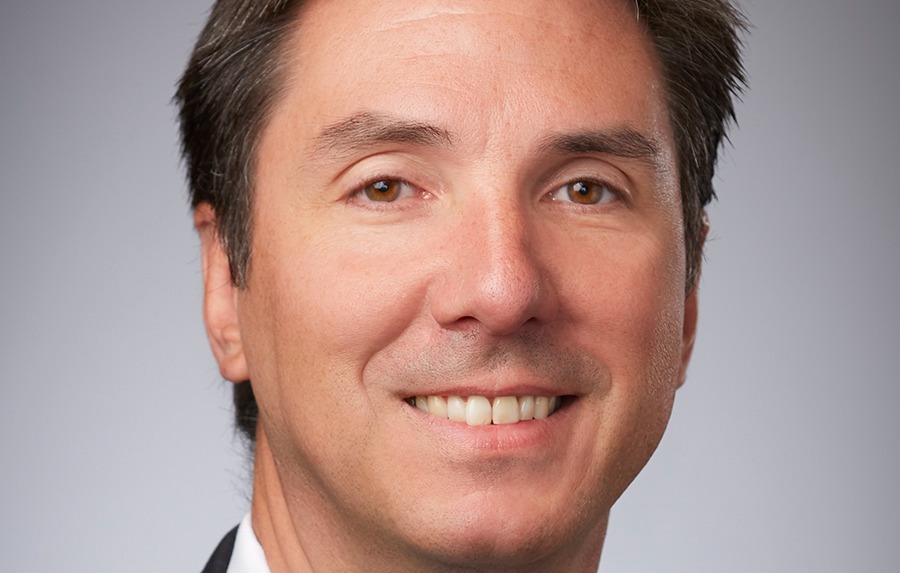If Johanna Söderström were a firefighter or a paramedic, she’d likely be the first person to rush into a burning building to put out the blaze and the first to disembark from the ambulance to help a car accident victim. The veteran human resources chief likes to jump into situations that need fixing—and that’s why she became chief people officer of Tyson Foods.
The $53 billion beef, pork and chicken processor has been troubled in a variety of ways since the beginning of the pandemic, including supply and output shortfalls, a Covid-era lower-management scandal and, most recently, a leveling off of corporate revenues as well as a New York Times story that tied Tyson with child-labor allegations.
But even as those troubles were starting, Söderström leapt out of a comfortable retirement three years ago to become executive vice president and chief people officer for the animal protein giant based in Springdale, Arkansas.
In taking the job at Tyson Foods, the Finland-born Söderström has encountered challenges from the technological to the logistical to the cultural, addressing each in the belief that she could help the company’s human capital management elevate the company and better represent Tyson to its industry and the American public. She has taken a number of steps to make that happen.
“The overall opportunity here is to be truly differentiated across the industry in how to become the most sought-after place to work,” Söderström tells StrategicCHRO360. “In my function, that’s how I can help. Everything we do is tied to that lens.”
Söderström speaks Swedish as well as Finnish and English, and began her career in Europe working for cellphone pioneer Ericsson in the marketing department. “But then someone suggested I should be doing something in the personnel space, because I have a tendency to get people to talk,” she says. “I wanted to work with customers. But my epiphany was that I could combine them: Employees are your customers. In the end, through affecting the employee experience, you can create a lot of value for your company.”
Her seminal experience in human capital management came at Dow Chemical headquarters in Midland, Michigan. Söderström became the HR strategic partner for the company’s biggest business, performance chemicals and materials. She rose to become overall HR chief in 2014 and served four years.
Then came another major ripple in Söderström ’s career: Dow merged with DuPont, another chemical titan. She encountered and learned a lot by helping steer two companies with very different, yet integral, cultures into a partnership that ultimately splintered the combined company into three separate entities.
“You had Dow, where people didn’t really turn over, with the same people brought up through the company, and DuPont, which didn’t have the same kind of talent programs and brought in a lot of external hires, including its CEO,” Söderström says. “That put different spins on how you look at talent and longevity and success.”
‘It wasn’t fun anymore’
Söderström left after the company splintered in 2019, taking her family to their second home, Florida. “It was fun for a while, but then Covid hit, and it wasn’t fun anymore,” she says. She then joined as a director of Neste, a Finnish company that produces renewable aviation fuel. “It is fascinating,” she says of her continued board membership, “but it wasn’t enough.”
When the Tyson Foods opportunity arose, Söderström says, “I didn’t know where Arkansas was. And I’m not sure I fully understood the complexity of Tyson,” which supplies 20 percent of America’s meat through production at 240 slaughterhouses and other plants, and a handful of retail brands, with 142,000 employees who work in some of the most challenging and potentially hazardous conditions in industry.
By the time she joined, Tyson had begun failing to keep American meat counters supplied with enough protein, and its plants were posting a disappointing record of employee safety and health during the pandemic—which eventually would include firing seven managers at a pork plant in Iowa for wagering on how many workers there would get sick from the coronavirus.
“There’s a lot of pride in this company,” Söderström says. “The people I met with to interview the team members and executives and board members, said, ‘That’s not who we are. We need to tell the story and ensure we can represent to everyone internally and externally who we are.”
Here are some of the ways Söderström has brought Tyson Foods along:
Do the obvious. To her, such moves included Tyson’s becoming a pioneering manufacturing company in putting a Covid-vaccine mandate in place, in October 2021. Before that, Söderström conducted the company’s first employee-engagement survey.
“Everyone does them, but we hadn’t, until December 2020,” she says. “It was insightful for many different reasons. One of them was to change the perception that our team members—because they’re working in plants and cut up meat—don’t know how to use technology. We made it so that employees could only do the survey with QR codes.”
The working assumption among Tyson Foods executives seemed to have been that most production employees didn’t know how to use common cellphone technology such as QR codes. Söderström found that spurious, partly because 93 percent of Tyson workers had mobile phones.
“They used QR codes to order their food in restaurants,” she says. “I’d spent part of my previous life traveling the world and seen beggars on the streets in Mumbai using phones, so why couldn’t our U.S. workers? We also have a lot of workers who are immigrants and refugees, and they actually transfer money to their families on phones.
“Unfortunately, people made assumptions, based on the work they do, that is how their technical understanding comes,” Söderström says. “That’s a huge mistake. Our workers were much more knowledgeable than we’d assumed, and we could use that as a starting point, instead of starting from scratch.”
Do the necessary. Many of Tyson’s workers “struggle to get to work,” Söderström says. “They may not have a car. Many of our plants aren’t in urban areas; they’re remote.” So she spearheaded the creation of a car-pooling program, partnering with Enterprise.
Healthcare remained an issue with Tyson employees even after the pandemic, especially in rural plant locations where access to services can be a problem—and where immigrant employees often face language obstacles. Emergency room visits are the only healthcare many of them received.
So, Söderström spearheaded the creation of seven pilot, no-fee healthcare clinics funded by the company. The three-year test is intended to serve about 36,000 employees and their families, with an emphasis on preventive care that will boost the well-being of the patients.
“We have [communication] campaigns that tell employees what people have experienced when they visit these clinics and talk about how this isn’t Big Brother watching you,” she says. “You can detect things that can be detrimental, like high blood pressure.”
The clinics also are demonstrating a path to cost savings for Tyson and its employees.
“Over the first 18 months, team members saved $700,00 in co-pays,” Söderström says. “That matters.” And, she says, healthier workers “have a direct correlation to retention” and higher productivity measures. “That’s something we’ve hit on across all seven clinics.”
Do the difficult. The strenuous nature of much of plant work with animal carcasses, and a general shortage of labor, have combined to prompt Tyson to accelerate its automation efforts.
“It’s an opportunity for the company as a whole,” Söderström says. “We have to help our current workforce think not just about accepting the idea of working with digital [technologies] but truly being digital. There’s a big difference.”
Tyson’s new, $300 million plant in Danville, Virginia, is a vanguard facility in this regard. The plant produces nuggets, patties and other cooked-chicken forms using industry-first technology and innovative pilots to increase the efficiency over prior facilities by up to 30 percent—and cut labor requirements by about 20 percent.
“We take roles from the production line that traditionally have been the hardest, with the biggest turnover,” Söderström says. “And we have machines and robotics performing those activities, which also aren’t vulnerable to constant rotation and onboarding of employees.”
Just as important, she says, is to “retrain or reskill our existing employees so they can clearly see a path for them. Then, [automation] becomes an opportunity, not a threat. We have examples of team members on the packing line who have retrained themselves to do other tasks, as automation technicians, and walk home with two or three times the pay. Those are the stories that will help bring the workforce along.”
Other narratives aren’t so helpful, such as the Times story recently that alleged migrant children as young as 13 were working overnight shifts for contractors in Tyson and Perdue Farms plants in eastern Virginia. That would be a violation of federal law, and the Labor Department is investigating.
“It’s a true issue across the country, and that there is anywhere a tolerance for child labor is as wrong as wrong can be,” Söderström says. “We can be absolutely certain we haven’t done such things when the employees are ours. We have contracts in place with third parties to audit these things all the time.”
But in the wake of the Times report, Söderström says, “We have now ensured that every single person who works across our facilities, that are our employees, need to be aware that if they see something, they need to say something.”
Overall, Söderström says, her efforts at Tyson continue “to connect our people agenda with our strategic agenda, by operationalizing it and tying it to culture. It can’t just be, ‘This is our HR program.’ If we don’t truly understand its impact, and can’t marry that with care for team members and an understanding of what they truly need, you won’t get the multiplier.
“HR as a whole needs to be closely attuned to every aspect of the business and put care of the team member in the middle of it.”








